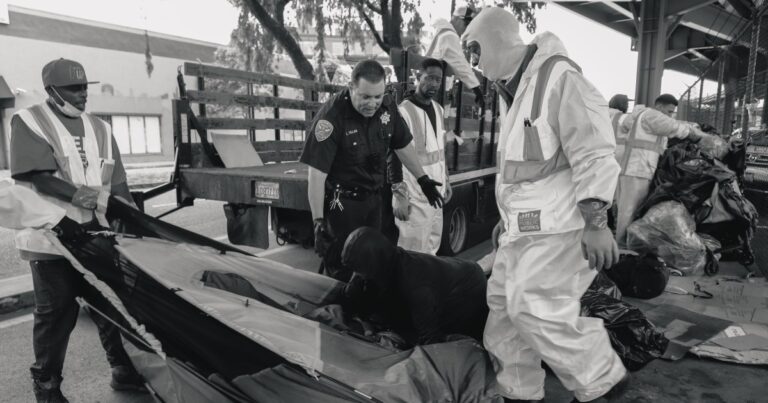Addressing Homelessness in San Francisco: A Critical Examination of Recent Policies
The Situation Unfolds
During a rally last August outside a federal courthouse, San Francisco Mayor London Breed expressed frustration regarding the limitations on actions to clear homeless encampments. Supporters sought more aggressive measures to address visible homelessness, acknowledging the adverse conditions that encampments present for residents.
Public Reaction to New Policies
Recently, as Mayor Breed and California Governor Gavin Newsom announced new policies targeting homeless individuals, public sentiment shifted. Many perceived these measures as overly harsh. Small-business owner Adam Mesnick, who previously advocated for sweeps, described a recent incident recorded by the San Francisco Standard as “inhumane.” The video depicted a distressing scene where a man lost his tent while attempting to retrieve his belongings, discarded like refuse by city workers.
Legal Context
Last year, both officials filed amicus briefs with the Supreme Court to gain more authority to utilize police for clearing tent encampments. They lauded the court’s recent decision that gave them that leeway, dismissing dissent from Justice Sonia Sotomayor, who warned that criminalizing homelessness violates the Eighth Amendment by punishing those without options.
Consequences of Enforcement
Since July 30, the city has intensified efforts to eliminate encampments, leading to disturbing incidents involving the seizure of personal belongings, including essential items like identification and medications. One woman recounted having her financial cards removed while being pressured to relocate to a crowded shelter, resulting in her facing potential legal consequences for being cited for illegal lodging.
Impact of Sweeps on Vulnerable Populations
Sweeps appear counterproductive in addressing the root causes of homelessness. They not only traumatize individuals but also strip them of vital resources needed for survival in San Francisco’s challenging climate. In many cases, personal identification—integral for accessing services and housing—has been discarded.
Opportunity for Sustainable Solutions
Critically, some individuals undergoing these upheavals are already on paths to housing. For instance, a couple cited recently is in line for one of 794 vacant permanent supportive housing units, depending on available resources. Yet, many units remain unoccupied due to repairs or referral processes.
The Scale of the Crisis
San Francisco is grappling with an acute shortage of emergency shelter beds for over 4,300 individuals identified as homeless. The point-in-time count highlights an alarming rise in families experiencing homelessness, primarily due to factors such as job loss and an influx of migrants lacking housing options.
Rising Demands for Family Shelters
According to Compass Family Services, the need for emergency shelter beds for families has escalated significantly, with waiting lists swelling from 87 to 511 in just a few months, reflecting newly expanded eligibility requirements.
Addressing the Growing Issue of Seniors
An emergent category among the unhoused population includes seniors on fixed incomes who find themselves homeless for the first time, as their retirement benefits fall short of covering housing costs.
Calls for Comprehensive Solutions
Current sweeps are failing to resolve the homelessness crisis and, instead, contribute to ongoing suffering. The pressing need lies in providing immediate access to shelter and housing resources. This includes promptly moving individuals into the 794 available permanent supportive housing units and ensuring treatment options for individuals facing mental health and addiction challenges.
Long-Term Strategy for Change
To effectively tackle homelessness, the city must shorten the transition times from emergency shelters to permanent housing. This may require financial investments to develop affordable housing options that cater to the growing demand.
Conclusion
Ultimately, financial and systemic investments focused on humane solutions are vital for improving conditions on the streets, rather than relying on enforcement actions that exacerbate the plight of those most in need.



